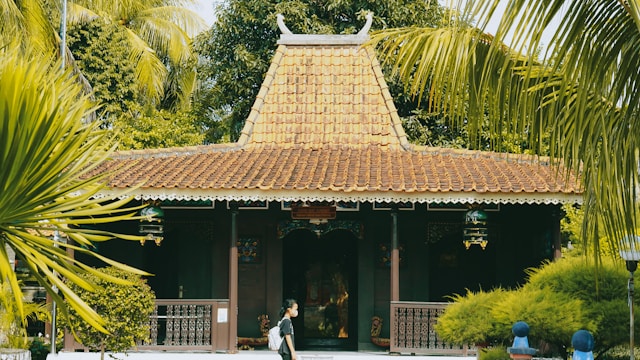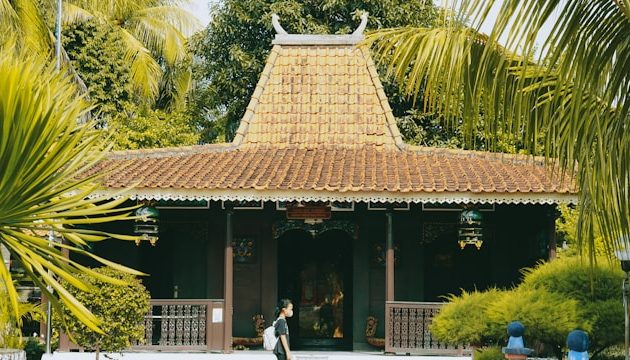
As the bustling capital of Indonesia, Jakarta offers a unique blend of vibrant city life, deep-rooted history, and cultural diversity. For first-time visitors, navigating Jakarta can be both exciting and overwhelming due to its expansive layout and rich variety of experiences. This guide provides a comprehensive look into the best ways to explore Jakarta, from iconic landmarks to local delicacies and practical travel tips. Whether you’re here for a short visit or an extended stay, our guide will help you experience Jakarta like a seasoned traveler.
1. Getting to Know Jakarta
Jakarta is the largest city in Indonesia, often referred to as the country’s financial and political hub. Known for its lively urban scene, Jakarta offers a captivating mixture of modern skyscrapers, historic sites, and cultural landmarks. Situated on the northwest coast of Java, Jakarta is also a gateway to other Indonesian destinations.
Where to Stay in Jakarta
Jakarta is divided into five main areas: Central, West, East, South, and North Jakarta. Each area has its own charm and variety of accommodations to suit different budgets.
- Central Jakarta: Ideal for first-timers due to its proximity to main attractions, high-end hotels, and luxury shopping malls.
- South Jakarta: Known for its upscale restaurants, entertainment, and vibrant nightlife. This area is perfect for younger travelers and expats.
- North Jakarta: Home to the historic Sunda Kelapa Port and Ancol Dreamland, this is a great area for families and tourists interested in cultural history.
- West Jakarta: Known for the old town of Kota Tua and the Chinatown district of Glodok, making it a haven for history buffs.
- East Jakarta: More industrial but home to local markets and affordable accommodations.
2. Top Attractions in Jakarta
National Monument (Monas)
The National Monument, or Monas, is a 132-meter tall tower symbolizing Indonesia’s fight for independence. Located in Merdeka Square, Central Jakarta, this iconic landmark offers stunning views of the city from the top. Visitors can explore the surrounding park and visit the historical museum inside the base of the monument.
Kota Tua (Old Town)
Kota Tua is Jakarta’s historical area, featuring colonial buildings and museums, such as the Jakarta History Museum and the Fine Arts and Ceramics Museum. Wander through the cobblestone streets and enjoy traditional performances or dine in one of the heritage cafes.
Istiqlal Mosque and Jakarta Cathedral
Jakarta’s Istiqlal Mosque, the largest mosque in Southeast Asia, stands across from the Jakarta Cathedral, showcasing the city’s religious diversity. Both buildings are architectural marvels and open to visitors, though modest dress is required.
Ancol Dreamland
Ancol Dreamland is Jakarta’s largest recreational area, located in North Jakarta. It includes beaches, a golf course, hotels, an amusement park (Dunia Fantasi), Sea World, and a variety of dining and shopping options.
Taman Mini Indonesia Indah (TMII)

Taman Mini Indonesia Indah is an impressive cultural park that represents the diverse cultures of Indonesia’s different provinces. The park features traditional houses, museums, and theaters where you can learn about Indonesian history and customs.
3. Local Cuisine to Try
Jakarta is a food lover’s paradise, with flavors inspired by Javanese, Chinese, and Dutch cuisines. Here are a few must-try dishes:
- Nasi Goreng: A classic Indonesian fried rice dish served with a fried egg, usually topped with crackers and sambal.
- Sate (Satay): Grilled skewers of meat, served with a peanut sauce. Sate is popular across Indonesia and varies by region.
- Gado-Gado: A vegetable salad served with a rich peanut dressing, known as a vegetarian favorite.
- Rendang: A rich, spicy beef stew, originating from the Padang region, but widely enjoyed in Jakarta.
- Martabak: A popular street food that can be savory or sweet, often filled with meat, chocolate, or cheese.
For the best experience, explore Jakarta’s street food vendors and night markets, especially in areas like Blok M, Glodok, and Pasar Baru.
4. Getting Around Jakarta
Jakarta’s traffic is infamous, so it’s important to plan your transportation. Here are the most effective ways to get around:
- TransJakarta Buses: A convenient, bus rapid transit system that connects different parts of Jakarta. Tickets are affordable, and buses have dedicated lanes to avoid traffic.
- MRT and LRT: The MRT (Mass Rapid Transit) and LRT (Light Rail Transit) are recent additions to Jakarta’s transport system, making travel faster and more efficient in certain areas.
- Ojeks and Ride-Hailing Apps: Ojeks (motorcycle taxis) are a quick and convenient way to navigate through traffic. Apps like Gojek and Grab are popular for booking ojeks and cars.
- Taxis: Blue Bird taxis are reputable and widely available. Always opt for metered taxis to avoid price haggling.
5. Shopping in Jakarta
Jakarta is a shopping haven with options ranging from luxury malls to bustling local markets:
- Grand Indonesia and Plaza Indonesia: These upscale malls in Central Jakarta feature international brands, high-end dining, and entertainment.
- Pasar Tanah Abang: Southeast Asia’s largest textile market, offering affordable clothing, fabrics, and souvenirs.
- Glodok: Jakarta’s Chinatown, known for electronics, Chinese herbs, and unique snacks.
- Pasar Santa: A hip market in South Jakarta popular with younger crowds for artisanal goods, vintage finds, and indie music.
6. Essential Travel Tips for First-Time Visitors
- Weather: Jakarta is hot and humid year-round, with a rainy season from November to March. Pack light, breathable clothing and be prepared for rain showers.
- Language: Bahasa Indonesia is the official language, though English is widely understood in tourist areas. Learning a few basic Indonesian phrases can be helpful.
- Currency: The Indonesian Rupiah (IDR) is the local currency. ATMs are widely available, but it’s good to carry some cash for smaller vendors.
- Safety: Jakarta is generally safe, but like any large city, it’s wise to be cautious with your belongings, especially in crowded places.
7. Day Trips and Excursions Around Jakarta
For those with extra time, Jakarta serves as a gateway to other scenic destinations in Java.
- Bogor: A 1-hour drive from Jakarta, Bogor is known for its lush Botanical Gardens and cooler climate, making it a refreshing escape.
- Thousand Islands (Kepulauan Seribu): This group of small islands north of Jakarta offers pristine beaches and clear waters, ideal for snorkeling and diving.
- Bandung: Known for its scenic tea plantations, cool weather, and colonial architecture, Bandung is a popular destination for a weekend getaway.
8. Best Time to Visit Jakarta
The ideal time to visit Jakarta is during the dry season, from May to October. This period offers pleasant weather, allowing you to explore outdoor attractions with fewer interruptions from rain. However, being a bustling city, Jakarta offers year-round attractions and events that make it worth visiting at any time of the year.